Zhangjie Peng
Effective DoF-Oriented Optimal Antenna Spacing in Near-Field XL-MIMO Systems
Jan 13, 2025Abstract:This letter investigates the optimal antenna spacing for a near-field XL-MIMO communication system from the perspective of the array gain. Specifically, using the Green's function-based channel model, the letter analyzes the channel capacity, which is related to the effective degrees-of-freedom (EDoF). Then, the letter further investigates the applicability of two EDoF estimation methods. To increase EDoF, this letter focuses on analyzing the impact of antenna spacing. Furthermore, from the perspective of the array gain, the letter derives an approximate closed-form expression of the optimal antenna spacing, at which EDoF is maximized and the array gain at the antenna nearest to the focused antenna of the transmit array becomes zero. Finally, numerical results verify the main results of this letter.
Active RIS-Aided Massive MIMO With Imperfect CSI and Phase Noise
May 06, 2024



Abstract:Active reconfigurable intelligent surface (RIS) has attracted significant attention as a recently proposed RIS architecture. Owing to its capability to amplify the incident signals, active RIS can mitigate the multiplicative fading effect inherent in the passive RIS-aided system. In this paper, we consider an active RIS-aided uplink multi-user massive multiple-input multiple-output (MIMO) system in the presence of phase noise at the active RIS. Specifically, we employ a two-timescale scheme, where the beamforming at the base station (BS) is adjusted based on the instantaneous aggregated channel state information (CSI) and the statistical CSI serves as the basis for designing the phase shifts at the active RIS, so that the feedback overhead and computational complexity can be significantly reduced. The aggregated channel composed of the cascaded and direct channels is estimated by utilizing the linear minimum mean square error (LMMSE) technique. Based on the estimated channel, we derive the analytical closed-form expression of a lower bound of the achievable rate. The power scaling laws in the active RIS-aided system are investigated based on the theoretical expressions. When the transmit power of each user is scaled down by the number of BS antennas M or reflecting elements N, we find that the thermal noise will cause the lower bound of the achievable rate to approach zero, as the number of M or N increases to infinity. Moreover, an optimization approach based on genetic algorithms (GA) is introduced to tackle the phase shift optimization problem. Numerical results reveal that the active RIS can greatly enhance the performance of the considered system under various settings.
Active RIS-Aided Massive MIMO Uplink Systems with Low-Resolution ADCs
Apr 22, 2024Abstract:This letter considers an active reconfigurable intelligent surface (RIS)-aided multi-user uplink massive multipleinput multiple-output (MIMO) system with low-resolution analog-to-digital converters (ADCs). The letter derives the closedform approximate expression for the sum achievable rate (AR), where the maximum ratio combination (MRC) processing and low-resolution ADCs are applied at the base station. The system performance is analyzed, and a genetic algorithm (GA)-based method is proposed to optimize the RIS's phase shifts for enhancing the system performance. Numerical results verify the accuracy of the derivations, and demonstrate that the active RIS has an evident performance gain over the passive RIS.
Deep Learning-Based CSI Feedback for RIS-Aided Massive MIMO Systems with Time Correlation
Mar 19, 2024



Abstract:In this paper, we consider an reconfigurable intelligent surface (RIS)-aided frequency division duplex (FDD) massive multiple-input multiple-output (MIMO) downlink system.In the FDD systems, the downlink channel state information (CSI) should be sent to the base station through the feedback link. However, the overhead of CSI feedback occupies substantial uplink bandwidth resources in RIS-aided communication systems. In this work, we propose a deep learning (DL)-based scheme to reduce the overhead of CSI feedback by compressing the cascaded CSI. In the practical RIS-aided communication systems, the cascaded channel at the adjacent slots inevitably has time correlation. We use long short-term memory to learn time correlation, which can help the neural network to improve the recovery quality of the compressed CSI. Moreover, the attention mechanism is introduced to further improve the CSI recovery quality. Simulation results demonstrate that our proposed DLbased scheme can significantly outperform other DL-based methods in terms of the CSI recovery quality
Performance Analysis on RIS-Aided Wideband Massive MIMO OFDM Systems with Low-Resolution ADCs
Mar 14, 2024Abstract:This paper investigates a reconfigurable intelligent surface (RIS)-aided wideband massive multiple-input multiple-output (MIMO) orthogonal frequency division multiplexing (OFDM) system with low-resolution analog-to-digital converters (ADCs). Frequency-selective Rician fading channels are considered, and the OFDM data transmission process is presented in time domain. This paper derives the closed-form approximate expression of the uplink achievable rate, based on which the asymptotic system performance is analyzed when the number of the antennas at the base station and the number of reflecting elements at the RIS grow to infinity. Besides, the power scaling laws of the considered system are revealed to provide energy-saving insights. Furthermore, this paper proposes a gradient ascent-based algorithm to design the phase shifts of the RIS for maximizing the minimum user rate. Finally, numerical results are presented to verify the correctness of analytical conclusions and draw insights.
Beamforming Optimization for Active RIS-Aided Multiuser Communications With Hardware Impairments
Feb 16, 2024
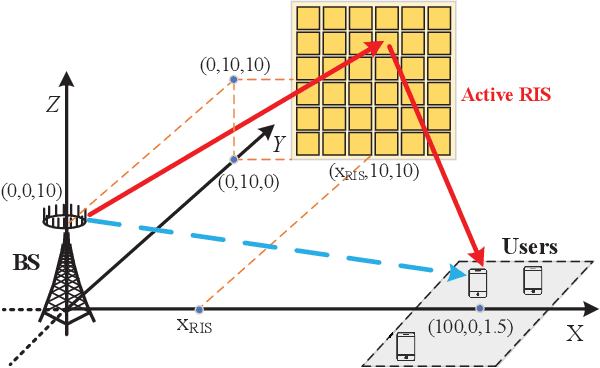

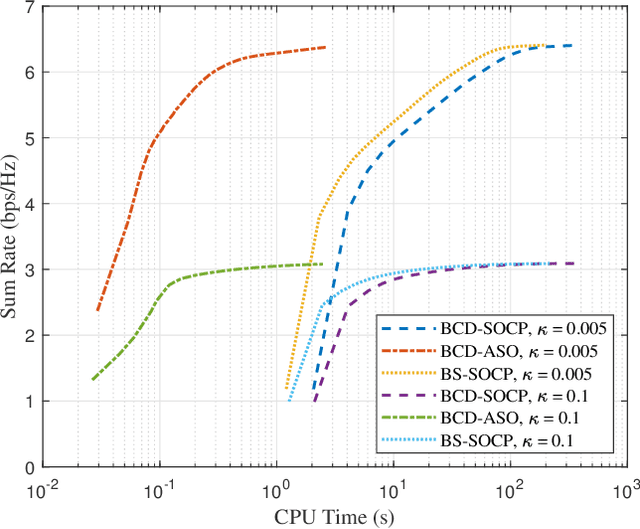
Abstract:In this paper, we consider an active reconfigurable intelligent surface (RIS) to assist the multiuser downlink transmission in the presence of practical hardware impairments (HWIs), including the HWIs at the transceivers and the phase noise at the active RIS. The active RIS is deployed to amplify the incident signals to alleviate the multiplicative fading effect, which is a limitation in the conventional passive RIS-aided wireless systems. We aim to maximize the sum rate through jointly designing the transmit beamforming at the base station (BS), the amplification factors and the phase shifts at the active RIS. To tackle this challenging optimization problem effectively, we decouple it into two tractable subproblems. Subsequently, each subproblem is transformed into a second order cone programming problem. The block coordinate descent framework is applied to tackle them, where the transmit beamforming and the reflection coefficients are alternately designed. In addition, another efficient algorithm is presented to reduce the computational complexity. Specifically, by exploiting the majorization-minimization approach, each subproblem is reformulated into a tractable surrogate problem, whose closed-form solutions are obtained by Lagrange dual decomposition approach and element-wise alternating sequential optimization method. Simulation results validate the effectiveness of our developed algorithms, and reveal that the HWIs significantly limit the system performance of active RIS-empowered wireless communications. Furthermore, the active RIS noticeably boosts the sum rate under the same total power budget, compared with the passive RIS.
Resource Allocation for RIS-Empowered Wireless Communications: Low-Complexity and Robust Designs
Nov 06, 2023



Abstract:This article delves into advancements in resource allocation techniques tailored for systems utilizing reconfigurable intelligent surfaces (RIS), with a primary focus on achieving low-complexity and resilient solutions. The investigation of low-complexity approaches for RIS holds significant relevance, primarily owing to the intricate characteristics inherent in RIS-based systems and the need of deploying large-scale RIS arrays. Concurrently, the exploration of robust solutions aims to address the issue of hardware impairments occurring at both the transceivers and RIS components in practical RIS-assisted systems. In the realm of both low-complexity and robust resource allocation, this article not only elucidates the fundamental techniques underpinning these methodologies but also offers comprehensive numerical results for illustrative purposes. The necessity of adopting resource allocation strategies that are both low in complexity and resilient is thoroughly established. Ultimately, this article provides prospective research avenues in the domain of low-complexity and robust resource allocation techniques tailored for RIS-assisted systems.
Energy Minimization for Active RIS-Aided UAV-Enabled SWIPT Systems
Jun 17, 2023Abstract:In this paper, we consider an active reconfigurable intelligent surface (RIS)-aided unmanned aerial vehicle(UAV)-enabled simultaneous wireless information and power transfer(SWIPT) system with multiple ground users. Compared with the conventional passive RIS, the active RIS deploying the internally integrated amplifiers can offset part of the multiplicative fading. In this system, we deal with an optimization problem of minimizing the total energy cost of the UAV. Specifically, we alternately optimize the trajectories, the hovering time, and the reflection vectors at the active RIS by using the successive convex approximation (SCA) method. Simulation results show that the active RIS performs better in energy saving than the conventional passive RIS.
Two-Timescale Transmission Design for Wireless Communication Systems Aided by Active RIS
Oct 25, 2022

Abstract:This paper considers an active reconfigurable intelligent surface (RIS)-aided communication system, where an M-antenna base station (BS) transmits data symbols to a single-antenna user via an N-element active RIS. We use two-timescale channel state information (CSI) in our system, so that the channel estimation overhead and feedback overhead can be decreased dramatically. A closed-form approximate expression of the achievable rate (AR) is derived and the phase shift at the active RIS is optimized. In addition, we compare the performance of the active RIS system with that of the passive RIS system. The conclusion shows that the active RIS system achieves a lager AR than the passive RIS system.
Active Reconfigurable Intelligent Surface for Mobile Edge Computing
Sep 07, 2022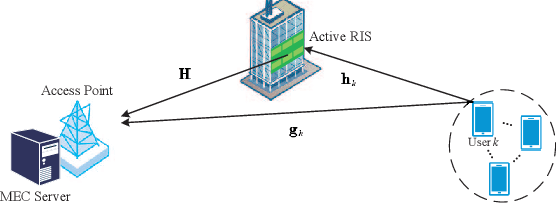
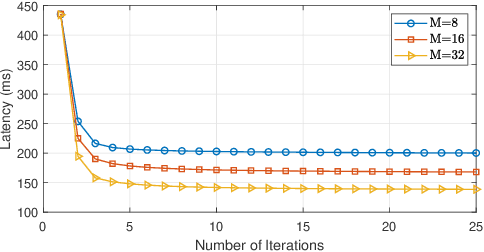
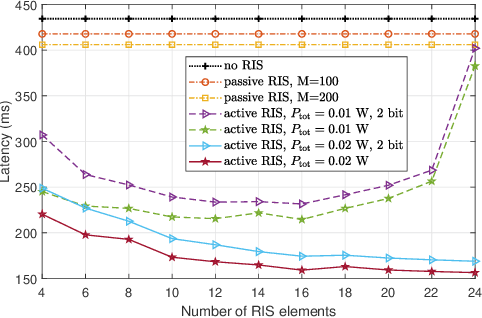

Abstract:This paper investigates an active reconfigurable intelligent surface (RIS)-aided mobile edge computing (MEC) system. Compared with passive RIS, the active RIS is equipped with active reflective amplifier, which can effectively circumvent the "double path loss" attenuation. We propose a joint computing and communication design to minimize the maximum computational latency (MCL), subject to both the phase shift constraints and the edge computing capability constraints. Specifically, the original problem is decoupled into four subproblems, and then the block coordinate descent (BCD) method and the successive convex approximation (SCA) method are applied to alternately optimize the subproblems. The simulation results show that with the same power budget, the performance gain achieved by the active RIS is much larger than that by the passive RIS.
 Add to Chrome
Add to Chrome Add to Firefox
Add to Firefox Add to Edge
Add to Edge